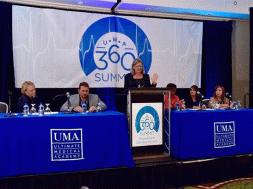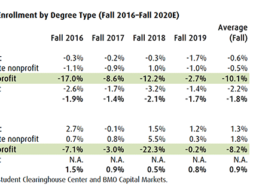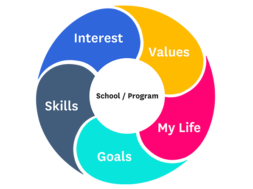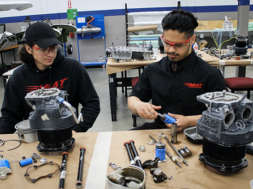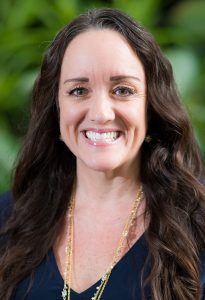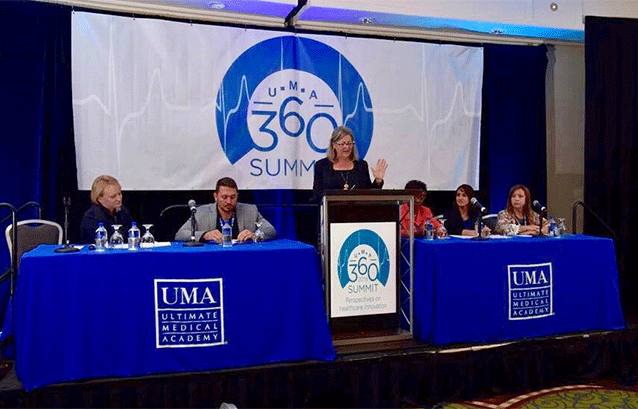
Filling the Education-Healthcare Pipeline – Panel Perspectives at the UMA 360 Degree Summit
By Julene Robinson, Vice Provost of Programs & Academic Affairs, Ultimate Medical Academy
Healthcare providers are facing a national shortage of skilled workers in the United States. Several factors contribute to the current and foreseeable demand for healthcare services and workers. Nationally, we have an aging population with people living longer, creating an increasing demand for skilled clinical healthcare workers. On top of this, medical advances and technology, including the federal mandate for electronic medical records, are creating an increasing demand for allied healthcare workers.
The Bureau of Labor Statistics (BLS) estimates that by 2022 there will be 1.2 million vacancies for registered nurses in the U.S.
This employment need has a ripple effect on the industry as a whole, as the unmet demand for registered nurses creates a shortage on other healthcare teams.1
The BLS also projects healthcare occupations to grow 18 percent from 2016 to 2026, much faster than the average for all occupations, adding about 2.4 million new jobs. Healthcare occupations are projected to add more jobs than any of the other occupational groups.2
Healthcare is now the largest employer in the U.S. In Pinellas County, Florida, home to the cities of St. Petersburg and Clearwater, the healthcare industry is the county’s largest employer. Currently, Pinellas County with an estimated population of 970,6373 has 804 annual openings for registered nurses, 508 openings for nursing assistants, and 209 openings for licensed practical and licensed vocational nurses4.
To address solutions on how to close the gap between the demand for and shortage of healthcare workers, Ultimate Medical Academy (UMA) hosted the nonprofit institution’s inaugural 360 Degree Summit: Perspectives on Healthcare Innovation on Sept. 21 in Tampa, Florida.
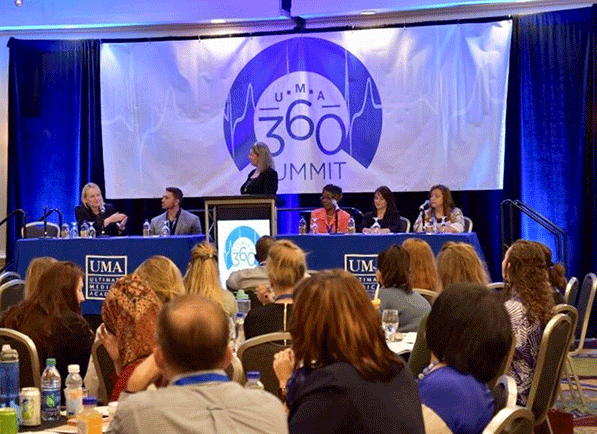 The summit brought together a variety of healthcare industry experts and educators from across the nation, including the Tampa Bay area, to participate in a dynamic conversation on perspectives in healthcare innovation. It featured sessions on expanding access, managing costs, and improving the quality of care and patient outcomes in the face of an aging population and critical staffing shortages. Designed for leaders and practitioners the summit focused on collaborative problem-solving through workforce diversity, innovative design, transformative technology, disruptive solutions, and creative alternatives to traditional healthcare offerings.
The summit brought together a variety of healthcare industry experts and educators from across the nation, including the Tampa Bay area, to participate in a dynamic conversation on perspectives in healthcare innovation. It featured sessions on expanding access, managing costs, and improving the quality of care and patient outcomes in the face of an aging population and critical staffing shortages. Designed for leaders and practitioners the summit focused on collaborative problem-solving through workforce diversity, innovative design, transformative technology, disruptive solutions, and creative alternatives to traditional healthcare offerings.
In addition to featuring three keynote speakers – Dr. J. Andrew Chacko, attending psychiatrist for the Veteran’s Administration’s outpatient clinic in San Bruno, California; Kathy Dempsey, author of “Shed or You’re Dead;” and John Couris, president and CEO of Tampa General Hospital – and several breakout sessions, the Summit included a panel on “Perspectives on the Education-Healthcare Pipeline.”
Moderated by Jane Swift, former Governor of Massachusetts and Executive Chair of the UMA Board of Directors, the panel included: Dr. Rebecca Sarlo, Ph.D., Campus Director at UMA’s Clearwater Campus; Yaridis L. Garcia, Community Planner Manager at the Juvenile Welfare Board (JWB) of Pinellas County; Andi Falvey, Business Development Manager at Pinellas County Economic Development; Kevin Bellas, Lead Recruiter at Hospital Corporation of America’s (HCA’s) West Florida Division; and Adrianne Tolin, a recent UMA Clearwater Campus Medical Assistant program graduate.
To gain the intended 360-degree perspective on the education-healthcare pipeline, panelist Tolin remarked that she never considered a career in healthcare for a couple of reasons. One, because she didn’t think of herself as a “natural” at patient care and two, she wasn’t sure she could handle what she called the “ickier” side of medicine.
However, once Tolin enrolled in UMA’s Medical Assistant program at the Clearwater Campus and learned and mastered the clinical training, she began to feel confident in the tasks of patient care and felt at ease in the field. In addition to the technical and soft skills she mastered, Tolin said she recognized that she could care for patients and inspire people. She realized that patients, specifically the rapidly growing geriatric population, needed and appreciated her helpful attitude and positive energy.
“I realized helping people was inspirational for me,” Tolin noted. “I started believing in myself and that I was making a difference. With a husband suffering from dementia and a child with mental illness, Tolin had many hurdles to overcome before her recent graduation from UMA. She credited UMA with giving her a support team that helped her to handle the challenges and stay motivated. Like for many students, education becomes a life-enhancing game-changer, and Tolin landed a job at Gulf Coast Geriatric Medical Center after she completed her externship requirements and graduated from UMA.
Reaching out to and connecting with someone like Tolin often requires taking innovative approaches and using resources to determine what is blocking potential candidates from getting hired by an employer.
Panelist Garcia finds the Hispanic population she works with often feels unwelcome in the broader community. This sense of not belonging becomes a barrier when applying and interviewing for job opportunities.
To remove this barrier, Garcia coordinates a bus tour that goes into the Hispanic community picking up people that can work and connecting them with resources in their area.
Panelist Bellas, who leads recruitment efforts for 16 hospitals in HCA’s West Florida Division, noted the talent acquisition focus at HCA is all about finding candidates that are enthusiastic. This often means reaching people who are new to healthcare, including actively going into public schools, and providing students with a streamlined career path. This can include scholarships, tuition reimbursements, work programs, and promoting from within. He also develops relationships with local schools that are training students to become healthcare professionals so that they seek employment at HCA’s facilities.
The healthcare field, with its massive array of jobs, can become the ladder of opportunity for people of all economic levels and ethnicities. With the wide variety of training available, from traditional schooling at a community college or university to mainly online schools, like UMA, that offer more flexibility, diversity must be embraced. It is important to understand each student’s background, culture, aspirations, and barriers. UMA has a dedicated, diverse student-support staff. These student-support employees work with each student individually to understand and help them overcome any obstacles that may keep them from graduating and starting or advancing their careers in healthcare.
This type of support and outreach is crucial in developing a flow of people into this high-demand field. Panelist Falvey encourages partnerships between educators and the various healthcare employers so they can focus their synergy on aggressively informing youth communities that healthcare is a place where they can grow. Organizations like hers are useful in ensuring that existing and new companies continue to offer good-paying jobs. Falvey also highlighted the importance of counties being able to provide social services as well as an abundance of public transportation options.
Falvey noted that the need for healthcare workers is acute. Community partnerships with businesses and education providers can help to do a better job of reaching high school students who may not know the full range of options in the healthcare field. If a student is thinking that the only healthcare career out there is to become a nurse or a doctor, both needing a massive requirement of time and funds, potential candidates might cross healthcare off their list without knowing that there is a plethora of other career options in the field.
It is also about connecting with these high school or college-aged students and letting them know the growth ladder is obtainable in healthcare.
These individuals may not realize that with the right training there are jobs available for them across the country. When they understand that they will make a healthy living wage, have the flexibility to move, and be offered good jobs, the healthcare field looks much more attractive as a career option.
Considering healthcare opportunities and challenges from a 360-perspective – healthcare, education, and community development working together – can help solve the current and projected healthcare job shortage. Thinking about how educators and employers can work together to meet the needs of all people wanting a career in healthcare is a vital component for shrinking the workforce supply and demand situation in the field. For example, the needs of a traditional student entering a four-year university or a two-year community college are entirely different from the needs of a non-traditional student who has a full-time job, a family, and may need child care and public transportation. Non-traditional students have the ability and desire to work, but their challenges can create a barrier to seeking higher education and eventually entering the healthcare field.
By adopting a collaborative approach across sectors, we can bridge the gap between healthcare vacancies and provide the ladder of opportunity for individuals to grow and learn, and embark on a successful career in the healthcare field. This approach can also offer marginalized people with a life-changing opportunity for themselves, their families, and communities.
When it comes to healthcare in our country, we are all stakeholders. Our communities thrive when there are skilled workers who can find jobs that bring them professional success and financial security. And, of course, we all benefit from receiving quality healthcare.
Resources
- Bureau of Labor Statistics, U.S. Department of Labor, Occupational Outlook Handbook, Registered Nurses, on the Internet at https://www.bls.gov/ooh/healthcare/registered-nurses.htm (last modified April 13, 2018).
- Bureau of Labor Statistics, U.S. Department of Labor, Occupational Outlook Handbook, Healthcare Occupations, on the Internet at https://www.bls.gov/ooh/healthcare/home.htm (last modified April 13, 2018).
- United States Census Bureau, Quick Facts, Pinellas County, Florida, on the Internet at https://www.census.gov/quickfacts/pinellascountyflorida (population estimates, July 1, 2017).
- Employment Projections, Florida Department of Economic Opportunity, Florida Skills Gab and Job Vacancy Data for CareerSource Pinellas – Top Occupations, Vacancy Status, and Length of Vacancy on the Internet at http://lmsresources.labormarketinfo.com/skills_gap/index.html (released May 2018).
JULENE ROBINSON, as Vice Provost of Programs and Academic Affairs at Ultimate Medical Academy (UMA), leads initiatives to monitor and improve program retention, student outcomes, and facilitate problem-solving and data-driven solutions to increase student achievement, program health, curriculum viability, and instructor performance.
UMA employs more than 2,000 faculty and staff members to support our 15,000 online students and hundreds of students at our Clearwater Campus. Since 2010 when I began working at UMA, I have championed student outcomes and believe in the transformational ability of education to impact generations of families and to help advance their communities.
Prior to joining UMA, I served as the Regional Executive Director at the Florida Department of Education, was Vice President of Program at Bardoli Global, Inc., the Founder and Principal of KIPP Houston High School, a Teach for America Corps member, and a Special Education teacher.
Contact Information: Julene Robinson // Vice Provost of Programs and Academic Affairs // Ultimate Medical Academy (UMA) // 813-605-8428 // jrobinson@ultimatemedical.edu // https://www.ultimatemedical.edu // https://www.facebook.com/umaonline/
